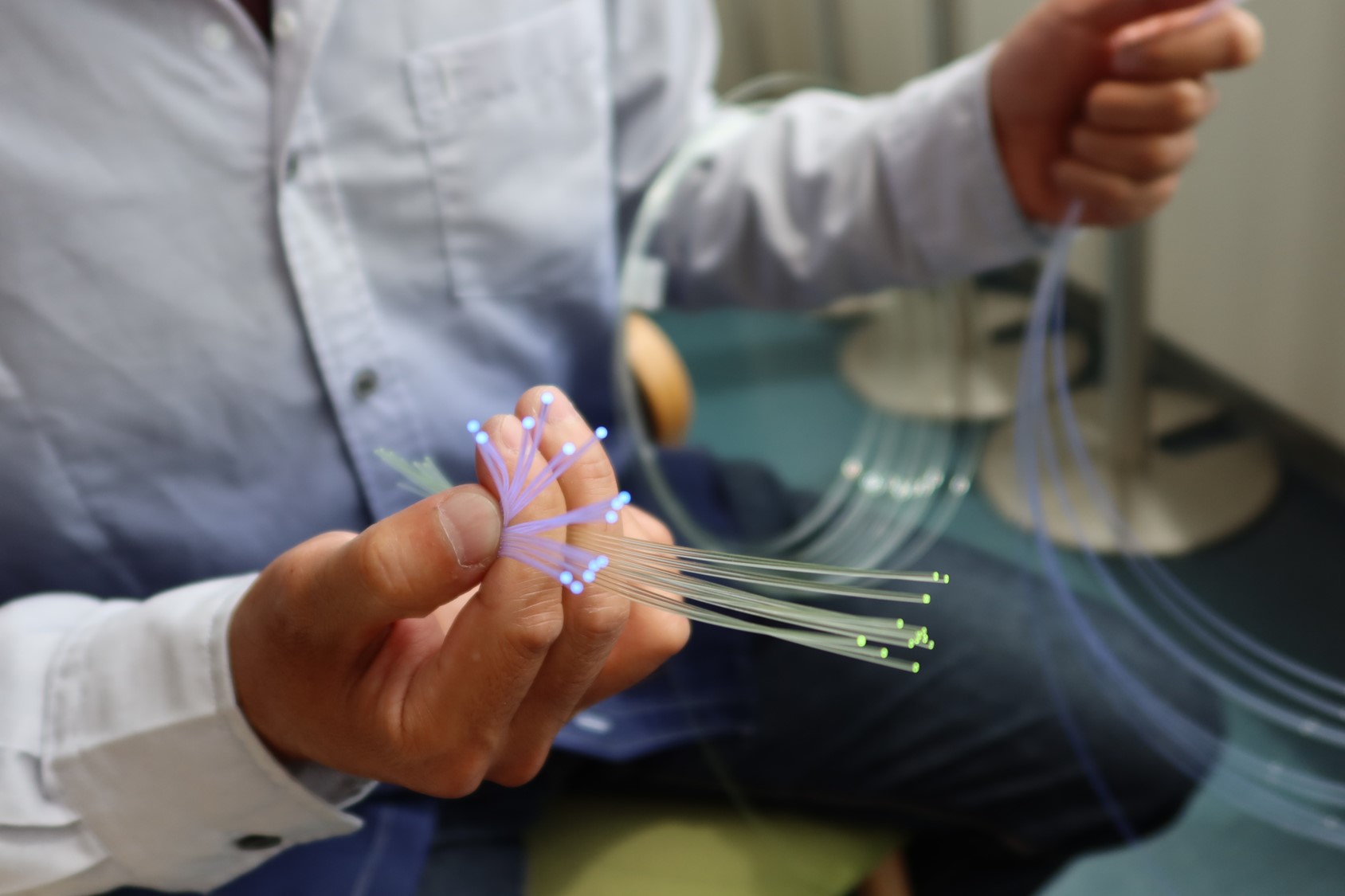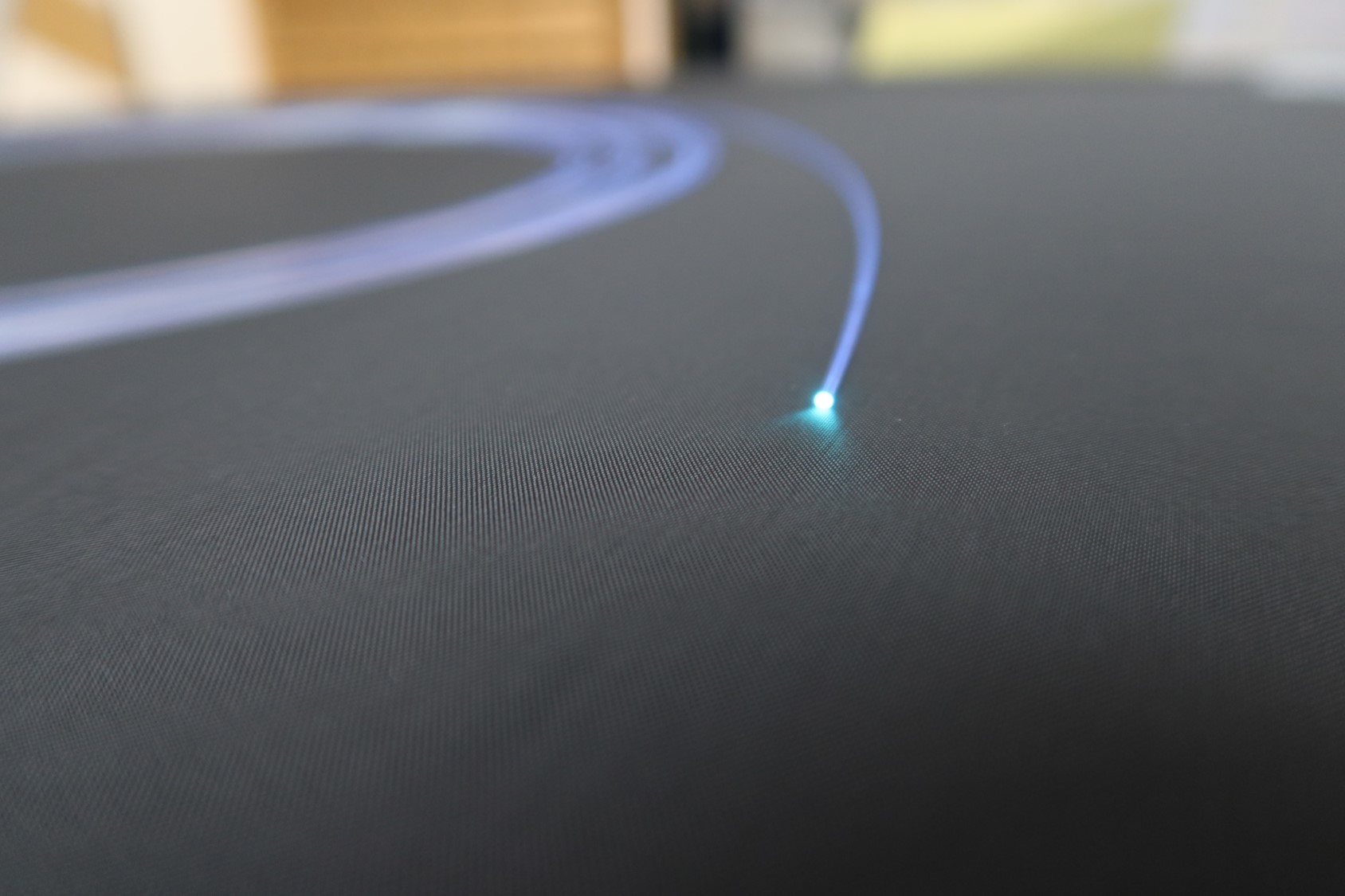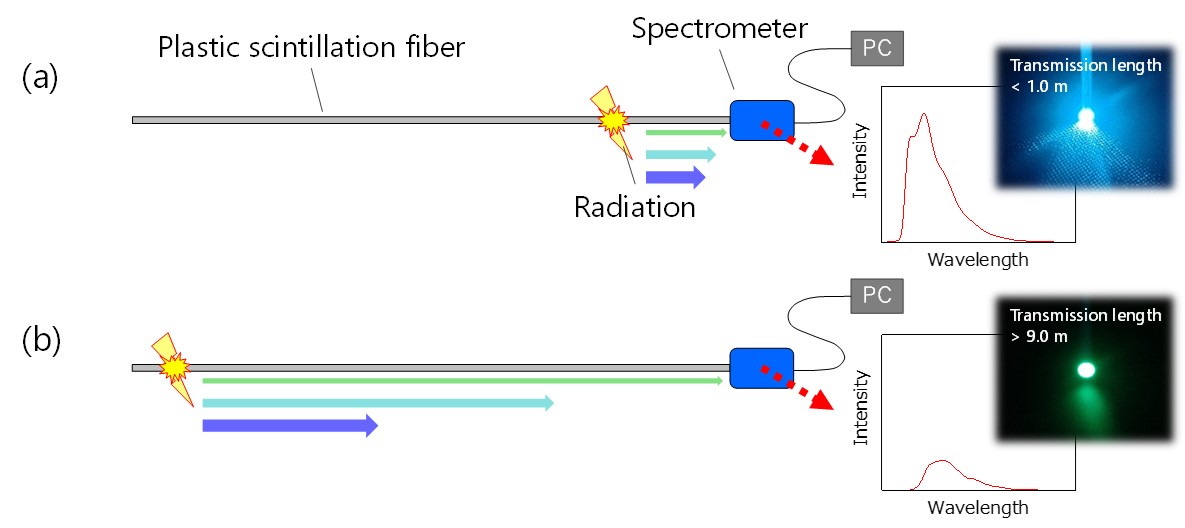Web Magazine: Topics Fukushima
Topics Fukushima No.110
October. 12, 2022
Position detection of radiation by color analysis of light
 Optical fiber for radiation detection.
Optical fiber for radiation detection.▽Contents
1.Special application of optical fiber
2.Importance of grasping the position of radiation
3.Optical fiber for radiation detection
4.Position detection of radiation by color analysis of light
-Novel wavelength resolving method-
1. Special application of optical fiber
What do you imagine when you hear the word "optical fiber"?
You may first imagine cables used for information technology, and illuminations used for Christmas etc.
Optical fibers seem to have nothing to do with radiation. However, optical fibers can be used in the field of radiation research.
2. Importance of grasping the position of radiation
To perform the decommissioning operations of the Fukushima Daiichi Nuclear Power Station, grasping the position of
radioactive materials is crucial to protect workers from unexpected exposure to radiation.
However, it is not easy to conduct this task under high radiation dose rate environment.
Here, radiation measurement using an optical fiber is one of the promising solutions.
3. Optical fiber for radiation detection
 Plastic scintillation fiber with blue light emission. This color contains important information.
Plastic scintillation fiber with blue light emission. This color contains important information.Plastic scintillation fiber, an optical fiber that emits visible light by the irradiation of high-energy particles such as radiation, can be used as a radiation sensor.
This optical fiber is very flexible, so it can be used for various purposes. Additionally, the optical fiber can measure the radiation one-dimensionally along the fiber.
Plastic scintillation fibers have been used for position detection of radiation for several decades. Here, the Collaborative Laboratories for
Advanced Decommissioning Science (CLADS) developed a unique technique that focused on the color information of light.
4. Position detection of radiation by color analysis of light
-Novel wavelength resolving method-
 The color of the emitted light from the end face depends on the light transmission distance.
The color of the emitted light from the end face depends on the light transmission distance.Let's see the plastic scintillation fiber that emits light with wavelengths ranging from blue to green when exposed to radiation. In (a) and (b),
blue and green lights are emitted from the end face of the fiber, respectively. Here, these colors contain the position information of radiation.
Dr. Yuta Terasaka has developed a new method to determine the position of incident radiation by analyzing the color of light emitted from the end face of an optical fiber in detail.
This new method is named "wavelength-resolving analysis."
This method can be used in places with very high radiation doses (several Gy/h), where conventional position-sensitive radiation detectors using plastic scintillation fiber would not work.
Furthermore, this method achieved a low price because it does not require complicated electronic equipment.
